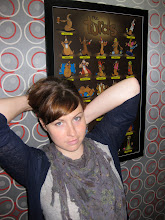Donghai Daxue (Univeristy) has unique architecture designed from the Qing Dynasty period
I've been studying at Donghai University in Taichung, Taiwan for 4 months now and I can't believe it's time to say goodbye. Susan and I have had (good) memories: missing/barely making transportation; dedicating 5 hours every Thursday (3 hours for bus and train rides, 2 hours for class); our teacher telling us that 'he's too kind' (in Chinese) b/c he tells us we speak well (in essence, we don't speak as well as he gives us credit for).
Susan and I soaking in all the Chinese we can in class with Lin Laoshi (Lin teacher).
Susan and I are the only students during our 2 hour class. In February, we decided we'd focus on learning how to speak Mandarin rather than be overwhelmed by reading and writing characters. One of the tricky parts about the language is that it's written language (traditional characters) has no phonetic equivalence. So, you can't look at a character and sound out a word. This is one of the reasons why Taiwanese and Chinese students spend many hours in school, because they have an unbelievable amount of characters to memorize. It even comes down to the stroke order of the character. My students complain about being teased if they write their characters with the wrong strokes.
The University was founded by Methodists missionaries in 1955 (which is unique because most Taiwanese are Buddhists/Daoists). The beautiful Luce Memorial Chapel, designed by the noted architect I.M. Pei, lies in the middle of campus.
This language is challenging! To help, Taiwan has developed a national writing system that allows for phonetic pronunciation called ba, pa, ma, fa (looks like this: ㄅㄆㄇㄈ). Yep, I didn't learn that either but my fellow Donghai colleagues, Amy and Whitney, did and they enjoy it. I chose to learn pīnyīn, which is used in Taiwan and China. This is the phonetic spelling of the sounded word but this still isn't easy. For example: the pīnyīn letter x (which is used often) sounds like the English "ch" as in "church", but without the "t"-sound at the beginning. It's pronounced with the tip of the tongue close to or touching the back of the upper front teeth. All of the words have a difficult Roman phonetic spelling, which is different from what English speakers are used to.
And goodness, I haven't even talked about tones yet! All I have to say is that's the hardest factor about speaking Mandarin. You can have the word right but if you say it with the wrong intonation (tone), the locals do not understand.
It's interesting to be a small part of the campus life in Taiwan.
I've had a great time trying to speak to the Taiwanese people. Of course there have been some slips while out on the streets like: saying pee instead of thank you, I want dumplings instead of I want sleep, or a curse word instead of the verb 'to look'. But, I've appreciated the locals patience to listen and try to understand; they are special people!
Donghai's architecture looks similar to Japanese style because of the Qing Dynasty's influence.
It feels like I am just starting to get the hang of Mandarin just as my time is coming to an end. I hope to use it again someday, but for now, my next goal will be mastering the Slavic language, Russian!
More photos of my beautiful campus in Taichung, Taiwan:
























No comments:
Post a Comment